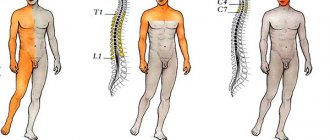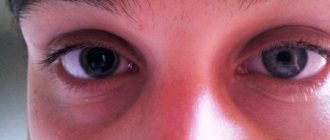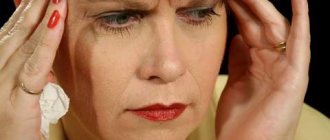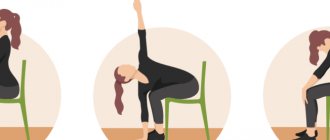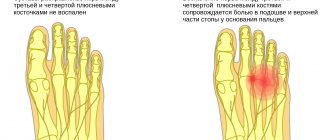Manic syndrome (mania) is defined as a severe mental illness, which is characterized by a triad of defining symptoms - increased hyperexcited mood, motor activity and the presence of acceleration of thinking and speech function.
Often cycles with depressed mood. Thus, with bipolar affective disorder, 4 different periods appear, which are classified depending on the type and intensity of symptoms.
This mental illness affects approximately 1% of the adult population. There may be certain warning signs, but not always. The first symptoms indicating mania may occur as early as puberty or early adulthood.
Causes and etiology of the disease
To date, the exact cause of manic syndrome has not been determined.
Most often, a complex of factors is involved in the development of mania, which together form a picture of the disease. Most often, manic syndrome manifests itself as part of bipolar disorder (the so-called manic-depressive syndrome or psychosis), which is characterized by recurrence in the family history, so there is most likely a genetic predisposition to this disease.
In this regard, suggestions have been made regarding the existence of genes for bipolar disorder. However, if manic disorder were caused solely by genetic factors, then among identical twins, one of whom suffers from the disorder, the other twin would inevitably also be affected. But this fact has not been confirmed by medical research.
On the other hand, the likelihood of disease in such cases increases significantly.
Research shows that, as with other mental disorders, mania (and bipolar disorder) is the result of damage not to one gene, but to a combination of genes that, together with environmental factors (drugs and medications, surgery, physical illness, etc.) .) and cause the development of mania.
Risk factors
In addition to genetic predisposition, there are other factors that can cause a manic state. These include:
- strong emotions (shock, sadness, mental anguish, fear, etc.);
- physical and mental exhaustion;
- season;
- taking certain medications (antidepressants, corticosteroids, etc.);
- drug use (cocaine, hallucinogenic substances, opiates).
Types of bipolar disorder
Variants of circular psychosis are important for the correct choice of treatment tactics. Therefore, when examining a patient, psychiatrists at our clinic pay great attention to this issue.
A large number of classification criteria have been developed to determine the form of the disease.
The following BAR options are used in practice:
- Unipolar. Psychotic disorders manifest themselves as either mania or depression.
- Bipolar. One disorder dominates over the other both in time and in clinical signs. For example, persistent depression is periodically interspersed with hypomania.
- Distinctly bipolar. In this case, both phases are approximately the same in both duration and intensity of symptoms.
The doctor’s task is to timely determine changes in the phase process and correct therapy. Western psychiatry prefers a more capacious and precise classification of the types of manic-depressive psychosis. Our specialists are increasingly using this option.
It contains:
- Monopolar flow. Periods of mania gradually turn into depression
- Correctly alternating forms. Intermissions are detected between phase symptomatic signs.
- Wrong types. Any of the phases, after a slight attenuation of the process without transition to the opposite one, can flare up with renewed vigor.
- Double excesses. Interphase occurs only after a recurrence of psychotic manifestations.
- Continuum options. The clinical picture of the disease does not have clear intervals and no pronounced subsidence of the disease process.
Clinical picture
Manic-depressive syndrome is manifested by significant mood swings - from unusually “good” to irritation, sadness and even hopelessness. Such fluctuations can be repeated cyclically. An episode of “elevated” mood is called mania, while an episode of sad mood is characterized by depression.
Symptoms of manic syndrome:
- unusually good, high spirits;
- increased energy, activity, restlessness;
- significant irritation;
- very fast thinking and speech, “jumping” from one thought to another;
- impaired concentration;
- low need for sleep;
- unrealistic ideas about your abilities;
- excessive material costs;
- increased sexual need;
- use of drugs, alcohol;
- provocative and aggressive behavior;
- denial, not accepting any refusal.
Manic tendencies exist if an excessively good mood in combination with at least 3 other symptoms persists for a week (at least).
Signs of mania
During a manic episode, the need for sleep decreases and sleep seems like a waste of time. The desire for activity, on the contrary, increases; at the beginning of the episode, this activity seems productive, but gradually loses its effectiveness and becomes chaotic. This occurs due to the acceleration of thinking and high distractibility, the ability to concentrate decreases, and sometimes a person in mania is not able to maintain attention for a long time on the topic of conversation or his activity. Things started are not completed.
A person is full of optimism, feels a surge of strength, and sees the future in an exclusively positive way. Speech becomes fast and loud. Thoughts also fly at high speed, in some cases reaching the point of a “jump of ideas”, when it is no longer possible for an external observer to follow the flow of thoughts and associations.
During a manic episode, the ability to control one's actions gradually diminishes. Criticism of one’s condition also disappears; sometimes a person understands that something is happening to him, but does not attach any importance to it.
The first episode of mania in bipolar disorder most often occurs between the ages of 15 and 30, but can occur at any age from childhood to 70 to 80 years.
To be diagnosed, the episode must last for at least 1 week and be of such severity that it interferes with normal work and social activities.
Manic episodes develop much faster than depressive episodes, sometimes even begin suddenly, lasting from 2 weeks to 5 months (the average episode duration is 3-4 months). Manic episodes occur less frequently than depressive episodes and last shorter on average.
In a manic state, a person strives to begin implementing his ideas instantly, practically bypassing the stage of criticism. If someone tries to interfere or gets in the way, this causes irritation and often leads to conflicts. At the same time, things that have been started - be it a work project or cleaning the house - are not completed, and the person switches to another activity. A person in a manic state is practically unable to remain idle or motionless.
| “One of the important features of mania is the tendency to quickly make serious and dangerous decisions. In the lives of people suffering from manic depressive disorder, unexpected decisions often occur that are immediately implemented. Examples of this include a sudden move abroad, borrowing a large amount of money, a sudden change in the type of activity or radical decisions in your personal life (divorce or starting a new relationship). But it is important to emphasize that sometimes in people with special intellectual potential and a propensity to engage in specific activities, an increased willingness to take risks (provided there are no manifestations of behavioral disorganization) can lead to high results.” Rybakovsky, Faces of Manic-Depressive Disorder |
Due to the desire for impulsive, thoughtless actions, people in mania commit actions that they later regret - they easily enter into sexual relationships with unfamiliar people, use alcohol and drugs, they can thoughtlessly quit their job, leave their family, take out a huge loan and start a new project , sell an apartment, give away property and money, move to another country, and so on. People in mania tend to underestimate risks and can drive at high speed without having time to keep an eye on the road.
All this is done without delay, while the person tends to overestimate his capabilities and lose criticality of the situation, which he later regrets when he returns to his usual state. After the episode ends, the person often experiences feelings of shame and guilt.
| “I was aware of what was happening to me. But at the time I was dating a girl who talked me out of going back on the pill. And when the mania unfolded in full force, I could no longer change anything. My head was completely blown off and I lost control of myself. It seems to me that in mania, a person’s personal traits, good or bad, manifest themselves in an exaggerated way. For me, mania is a state in which I do not feel any risks. I would call this a “non-critical condition”. I am a sociable and open person, kind, and this is abused. They took advantage of me and cheated me out of money. One of these dishonest people turned out to be the ex-girlfriend herself. Taking advantage of my inadequate condition, she lured out hundreds of thousands, and then completely withdrew money from my account. I lived in her kitchen, slept on an air mattress, and at the same time spent huge sums on her. He left her when he no longer had the strength to even explain himself. After this incident, my world turned upside down, I couldn’t comprehend how a loved one could act so vilely. The result of the new mania was a new debt of 4.2 million rubles. It was only after my second mania that I fully accepted the fact that I was sick and that I needed to take medication constantly. I started taking pills strictly according to the doctor’s recommendations.” How bipolar people live and dream |
What does a manic personality look like?
A person in a hypomanic period has a chronically elevated good mood, excess energy, increased mental and physical activity, and generally feels in good shape. He is very talkative and easily establishes contacts with other people, communicates without barriers.
This period of increased activity can also be reflected in a person’s sexual life, which can lead to superficial and reckless sexual relationships, and frequent changes of partners.
The onset of this period comes completely unexpectedly, without any warning signals and, as a rule, is well tolerated by the person.
The manic phase can be described as a period of excessively good mood and noticeably increased activity. A person feels absolute strength in all directions, in the eyes of himself he is invincible and unsurpassed.
As the number of ideas, pace and productivity increases, a person does not want to waste time on the opinions of others. If someone or something interrupts his activities, this increases his irritation, and the slightest irritation ignites his aggressiveness; a person may act inappropriately and dangerously.
Sometimes the manic personality is full of gaiety and tells jokes, often with vulgar or sexual overtones, even in socially unacceptable situations.
A person refutes any social taboos, which makes his behavior irresponsible, inappropriate and risky, endangering not only himself, but also those around him. He immediately implements his ideas and thoughts, without realizing the consequences in the personal, social and financial spheres. For example, you can note frequent excessive expenses when purchasing unnecessary items, entering into unprofitable or even fraudulent contracts.
Serious consequences are fraught with mania with psychotic symptoms (psychomanic syndrome), when a person simultaneously experiences a delusional disorder and hallucinations. These people often have “grand” ideas in which they are pathologically convinced, and they do not doubt their importance and superiority.
Megalomaniacal delusions can affect the mental aspect, which is manifested, for example, by a person’s belief that he speaks all the languages of the world, as well as the physical aspect of the personality. For example, a person considers himself the strongest in the world, immortal, not susceptible to any disease.
Other psychotic symptoms include paranoid symptoms, characterized by pathological resentment, suspicion and morbid thoughts.
Defense mechanisms and adaptation
The leading mechanisms of psychological defense in a manic personality type are denial and reaction.
Denial - ignoring, or turning into humor. This may be due to the fact that the situations in which these people find themselves can be emotionally difficult for them.
Ignoring – sexualization, intoxication, theft, etc. Prone to depreciation. This happens automatically. Bringing these processes to the level of awareness is one of the leading tasks of a psychologist when working with manic individuals.
Such clients prefer everything that distracts them from emotional suffering. It is also important to note omnipotent control. And, for the most part, authoritarian. Trying to control everything around them reduces their anxiety level.
Manic individuals are usually convinced of the success of their own plans.
You can often notice quite a lot of criticism towards other people.
The manic personality type is characterized by the presence of emotional violence and neglect towards other people.
Spectrum of disorders
Symptoms of mania can vary in intensity:
- hypomania – mild form; the disorder does not cause significant harm to a person's psychosocial functioning and is characterized by moderately elevated mood that persists for at least 4 consecutive days, increased energy, activity, and a feeling of increased productivity;
- classic mania – elevated mood and agitation lasting more than a week, increased self-esteem, loss of social inhibitions, risky behavior;
- manic disorder with psychotic symptoms often requires hospitalization, the disease is characterized by the presence of delusions and hallucinations; this form affects about 1/3 of patients (manias, usually expansive, religious, erotic, etc.).
Manic syndrome is divided into 3 types:
- euphoric syndrome - a feeling of bliss, contentment without significant hyperactivity;
- stuporous mania – complete absence of psychomotor symptoms;
- resonant mania - irritability, anxiety, sometimes aggression.
What to do if mania develops
The first step is to organize an examination of the patient by a psychiatrist. This is often difficult, since in a state of mania, patients feel great and, as a rule, refuse to be examined by a doctor. If you are faced with the fact that your loved one has the symptoms of mania described above, you should contact a psychiatrist yourself, tell him about the patient’s condition and get advice on how to proceed further. Often, in order to provide assistance to such patients, it is necessary to resort to involuntary hospitalization.
Diagnostic criteria
The diagnosis is made based on the medical history and interview with the patient. The exact type of mania is determined and appropriate treatment is decided. If necessary, tests are carried out to determine what type of mania the patient has developed.
Rorschach test
The Rorschach test (inkblot test) is one of the psychological methods used to analyze personality. This is a projective test that uses the projection of thinking processes and personal qualities onto undefined objects.
Altman scale
The Altman Scale is a self-report diagnostic scale that can be used to assess the presence and severity of manic and hypomanic symptoms, most commonly in patients suspected of having bipolar disorder.
This scale can assess differences in “normal” or baseline levels from mania in 5 subjective and behavioral areas:
- positive mood;
- self confidence;
- need for sleep;
- speech;
- activity.
Manic phase
When treating patients, specialists are faced with the main symptoms. They exhibit: hyperthymia - painful elevation of mood, motor mental agitation (tachypsia).
These manifestations go through 5 stages:
Hypomania with elevated mood, bursts of energy, acceleration of thought and speech. At the same time, all the activities of persons suffering from the disorder are unproductive. They sleep little and eat a lot.- Pronounced clinic. Patients express delusions of grandeur, talk continuously, but it is impossible to maintain a conversation with them. They are constantly obsessed with new ideas and never follow through with anything.
- Furies. The pain reaches its climax. Movements and speech become incoherent and unproductive. Patients need help
- Calm down. The symptoms gradually subside.
- Reactivity. All mental processes are restored. Clients have an asthenic condition. They may not remember what happened to them.
Therapy methods
In the treatment of manic syndrome, 2 main groups of medications are used: mood stabilizers and antipsychotics.
The patient may also be prescribed medications that have auxiliary effects, for example, for insomnia, anxiety and restlessness, etc.
The main drugs used in therapy:
- Mood stabilizers : a group of drugs intended for preventive treatment. Their long-term use reduces the risk of relapse of depression or mania. Drugs in this group are also used in acute cases of mania or depression.
- Antipsychotics (antipsychotics) : drugs used to treat mania or depression. Some of the newer antipsychotic drugs have also demonstrated effectiveness in long-term, prophylactic use, thus resembling the effects of mood stabilizers.
Additional (auxiliary) drugs:
- Antidepressants are used to treat depression. It is not recommended to use drugs in this group without a mood stabilizer - this can lead to a worsening of the disease.
- Sleeping pills and tranquilizers are intended only for short-term use in the treatment of insomnia, anxiety, in cases of tension or excitement.
Differential diagnosis
Manic vs. Hysterical: Both tend to be charming and can attract attention. The hysterical personality feels insufficiently supported. Manic can lead to devaluation of the psychologist. There is no preoccupation with gender, unlike the hysterical one. A psychologist, especially in the Gestalt approach, focuses on working with feelings, which can be a rather painful process.
Manic versus Narcissistic Personality: Both types exhibit grandiosity. Narcissists do not have intense worries like manic individuals. Denial, as a psychological defense mechanism of the individual, is mainly present in the manic. Narcissists, in most cases, are not inclined to end relationships with other people.
Manic versus Compulsive Personality: Both types are ambitious and demanding of themselves and others. Compulsive individuals are capable of deep relationships, long-term intimacy, and are modest. And manic people are pompous and incapable of getting close to others. And compulsive people are more moral. Manic individuals ridicule authorities and can be immoral.
Next in the series of articles we will look at the schizoid personality type.
How dangerous is a maniac for himself and for people?
In about half of the cases, there is an increase in the consumption of alcohol or drugs by the manic person.
Manic syndrome also carries various social risks. A person can cause inconvenience to himself, for example, with inappropriate jokes or arrogant behavior. The public, as a rule, is not sufficiently informed about a person’s mental state, and associates such behavior with the characteristics of his character. This significantly complicates the personal and social life of a manic person.
The significant financial losses that accompany reckless behavior in the manic phase often lead to subsequent social problems, logically related to the partner or marital relationship, which may also be negatively affected by this mental disorder.
Mania is a mental disorder that, unfortunately, cannot be prevented because... such disorders are mainly associated with hereditary transmission.
A healthy lifestyle, sufficient physical activity, avoidance of stressful and emotionally difficult situations and factors, regular and high-quality sleep, avoidance of alcohol and other psychoactive substances (marijuana, LSD, cocaine, methamphetamine, etc.) can bring certain benefits.
Causes of development of manic-depressive psychosis
To date, the exact reasons for the development of MDP have not been established. Most scientists agree that the formation of the disease is more often influenced by internal factors (genetics, character) than external ones (stress, traumatic event). At the same time, there may be a genetic predisposition to the disorder, but the disease may not manifest itself in any way until exposure to some external stress factor.
The risk group includes people with a melancholic temperament, emotional and sensitive, who react sharply to failures and the slightest stress. Bipolar affective disorder also often accompanies people with other mental problems and psychological trauma.
According to statistics, women are more likely to suffer from manic-depressive psychosis than men. But many scientists refute this opinion, citing the fact that women, experiencing psychological discomfort, more often turn to specialists for help. This is why the statistics are somewhat distorted. In fact, the disorder develops almost equally in both men and women.
One of the reasons for the development of MDP is hormonal imbalance. Women's hormonal levels are more unstable than men's. The appearance of the first menstruation in girls, puberty, premenstrual syndrome, pregnancy and lactation, menopause - all this significantly affects the level of certain hormones in the body.
External (social) factors in the development of MDP include loss of a job and source of income, problems in family life and communication with loved ones, grief experienced, accidents, natural disasters, imprisonment, etc. Strong psychotraumatic events can provoke the development of bipolar disorders and other mental disorders.
